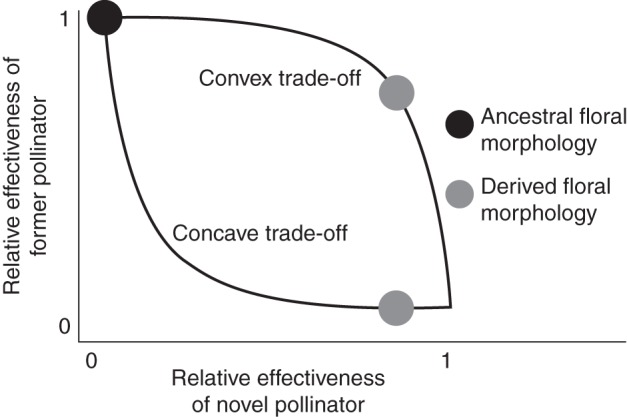Fig. 1.

The shapes of two hypothetical trade-offs in pollinator effectiveness during acquisition of a novel pollinator. Evolution of a novel morphology that increases the effectiveness of a novel pollinator can come with relatively little loss in effectiveness of a former pollinator (convex trade-off) or a relatively large loss in effectiveness (concave trade-off). The acquisition of a novel pollinator with no loss in effectiveness of the former pollinator (no tradeoff) is also possible. The ancestral floral morphology is expected to show lower effectiveness of the novel pollinator regardless of the trade-off shape. Different components of effectiveness, such as attractiveness and efficiency, can have differently shaped trade-offs for the same pollination shift. Figure modified from Sargent and Otto (2006).
